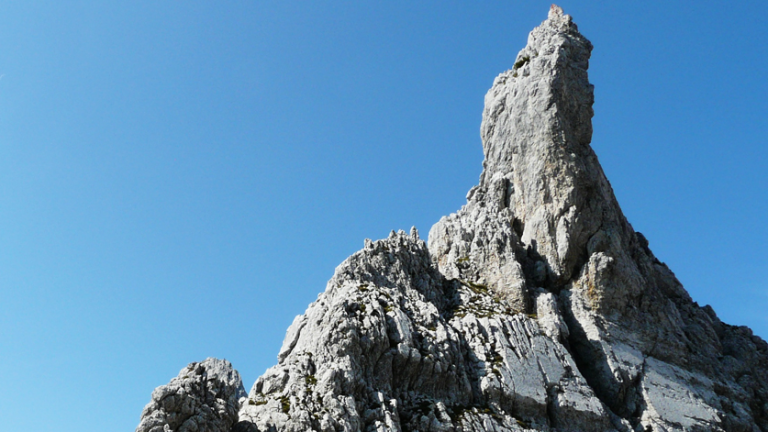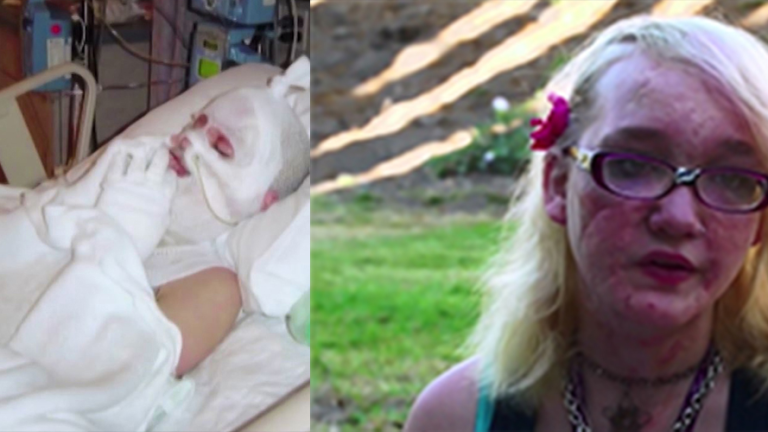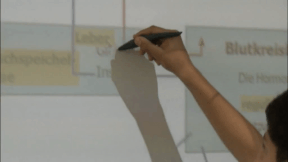Suche:
- # Artistry
- # Biology
- # Chemistry
- # Ecological
- # Economy
- # English
- # Foreign Language
- # Geography
- # German
- # Health
- # History
- # Informatik
- # Latin
- # Mathematics
- # Media Education
- # Music
- # Physics
- # Politics / Civics
- # Preschool
- # Primary School
- # Religion
- # Society
- # Sports
- # Technology
- # Training of Teachers
- # Vocational Education
Dictatorships in the 20th Century II
Nobody could trust his colleagues, his friends, even his own family any more. An entire nation was brutally oppressed, spied out and exposed to any conceivable form of despotism. Until Joseph Stalin died on 5th March 1953, these facts were the bitter reality of the Soviet citizens’ everyday life. This despot used his absolute power to wage war against his own people for decades.
Learn moreWasserstoff
Wasserstoff ist das häufigste Element im Universum. Auf der Erde ist der Wasserstoff größtenteils in Verbindung mit Sauerstoff im Wasser gebunden.
Learn moreMonetary System
For many hundreds of years, means of payment have been used for the exchange of goods. Initially, shells, silver or gold were offered as payment. Today money still fulfils the same purpose, but its form and complexity have changed profoundly.
Learn moreFascination Lime
Many products used in everyday life are impossible without lime. These are, among others, glass, sugar, paper as well as pharmaceutical and cosmetic products. The raw material is also indispensable in the construction materials industry. Iron and steel producers need limestone, in environmental protection it is used, for example, for air cleaning and drinking water purification.
Learn moreWerte und Normen in Deutschland
Dieser sprachlose Animationsfilm zeigt in leicht verständlichen Bildern in Alltagssituationen die Werte und Normen in Deutschland. Für Erwachsene und Kinder, welche neu in unsere für sie fremde Gesellschaft kommen und (noch) nicht unsere Sprache sprechen oder verstehen. Werte und Normen werden anschaulich auch ohne Sprachkenntnisse schnell vermittelt. Durch die Unterteilung des Filmes in sinnvolle Sequenzen (Gleichberechtigung, Meinungsfreiheit, Religionsfreiheit, Schulbildung, gewaltfreie Erziehung) können die einzelnen Themengebiete aufbereitet, diskutiert und vertieft werden. Als weitere Ergänzung kann der auf DVD und Online verfügbare Film „Werte und Normen in Deutschland – Mit und von Flüchtlingen“ in vier Sprachen“ (auch in Hocharabisch und Englisch) eingesetzt werden.
Learn moreCamp für Brandopfer
Wie gehen Menschen damit um, wenn sie, beispielsweise durch einen schweren Unfall, große und sichtbare Narben im Gesicht und am Körper davongetragen haben? Was tun, wenn das alte Leben schlagartig vorbei ist? Wenn viele Menschen gar nichts mehr mit einem zu tun haben wollen?
Learn moreJugendgewalt
Laut einer hessischen Studie haben über 60 % der 14-18-jährigen Schüler und Schülerinnen durch ihren Partner oder ihre Partnerin mindestens einmal irgendeine Form von grenzüberschreitendem Verhalten oder Gewalt erlitten. Das sind Verhaltensweisen, die Bedürfnisse und Befindlichkeiten der Geschädigten/des Geschädigten ignorieren, über Demütigungen, Beleidigungen und Einschüchterungen sowie psychischen, physischen und sexuellen Misshandlungen bis hin zu Vergewaltigungen und Tötungen. Körperliche Gewalthandlungen wurden seltener berichtet als Kontrollverhalten oder der Druck zu ungewollten Handlungen. Verstärkt sind diejenigen betroffen, die in ihrem familiären Umfeld Gewalt erlebten oder bezeugten.
Learn moreInteractive Whiteboards
Although the computer found its way into school some time ago already, it has mostly led a marginal existence so far, banished to extra practice rooms or to the side of the classroom. With the new medium of the interactive whiteboard the computer promptly becomes the focus of the lessons as the central hub. On the digital board that projects contents via a beamer like on an oversized computer monitor, pictures and texts as well as audio and video files can be displayed. The possibilities of representation on this new white board, the whiteboard, seem to be almost unlimited compared to the traditional blackboard. But with the help of the board things cannot just be better represented, the computer-connected board can, in addition, be used by teachers and pupils as a universal tool. On it, content in a new - that is interactive - form can be searched online, organised and presented in the classroom.
Learn moreRenaissance
While large parts of Europe still lived in the Dark Middle Ages and huge cathedrals dominated the cities, a new consciousness blossomed in Florence, Italy at the beginning of the 15th century:
Learn moreHuman Lung
Only rarely do we notice that we need them: our lungs. Mostly, we breathe unconsciously and shallowly – especially if we have a sitting job.
Learn moreAlkohol
Jenke von Wilmsdorff startet ein Experiment, das ihn an seine Grenzen bringen soll. Er trinkt über einen langen Zeitraum täglich exzessiv Alkohol und will herausfinden, was die „Volksdroge Nummer 1“ mit ihm macht.
Learn moreThe Eurasian Eagle Owl
With a body length of 60 to 75 cm and a wingspan of up to 170 cm, the Eurasian eagle owl is the largest owl in the world. It is also referred to as “king of the night skies”. After being hunted and almost exterminated by humans, the population of the Eurasian eagle owl has started rising again since the middle of the 20th century. Nevertheless, according to experts, it is not secured yet. Destroyed habitats and disturbances at the breeding sites, for instance by climbers, as well as dangers from power poles still threaten the population of the Eurasian eagle owl today.
Learn more


























